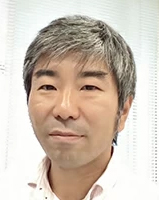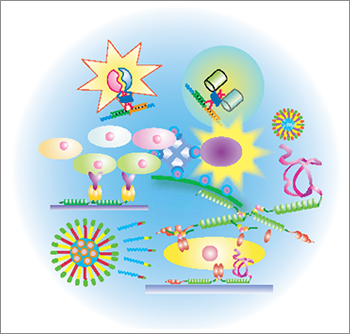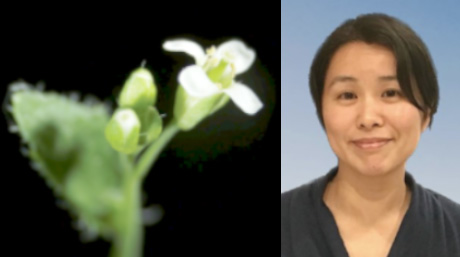Life Science and Technology News
【Labs spotlight】 Kobatake and Mie Laboratory
Creation of super biofunctional protein materials
The Department has a variety of laboratories for Life Science and Technology, in which cutting-edge innovative research is being undertaken not only in basic science and engineering but also in the areas of medicine, pharmacy, agriculture, and multidisciplinary sciences.
This "Spotlight" series features a laboratory from the Department and introduces you to the laboratory's research projects and outcomes. This time we focus on Kobatake and Mie Laboratory.

Areas of Supervision
Primary/Life Science and Technology
Secondary/Human Centered Science and Biomedical Engineering
Professor Eiry Kobatake![]()

Areas of Supervision
Primary/Life Science and Technology
Secondary/Science and Technology for health Care and Medicine, Human Centered Science and Biomedical Engineering
Associate Professor Masayasu Mie![]()
| Degree | Professor Eiry Kobatake : PhD 1990, Tokyo Institute of Technology Associate Professor Masayasu Mie : PhD 2000, Tokyo Institute of Technology |
|---|---|
| Areas of Research | Professor Eiry Kobatake : Construction of super biofunctional protein materials Associate Professor Masayasu Mie : Construction of biomolecular tools |
| Keywords | Professor Eiry Kobatake : protein engineering, cellular and tissue engineering, biomaterials, biosensing Associate Professor Masayasu Mie : biomaterials, protein engineering, cellular engineering, biosensing |
| Website | Kobatake and Mie Laboratory |
Research interest

Super biofunctional materials
To maintain their sophisticated vital activities, living organisms precisely control diverse biomolecules that perform various higher-order functions. Among these biomolecules, proteins are the molecules that perform the most diverse and sophisticated functions. To ensure maximum utilization of the functional abilities of proteins, human beings should aim to create novel proteins with functions that exceed natural biological functions by employing actively modifying natural proteins or designing new protein molecules. Using this process of "Super Biofunctional Material Engineering," we have created various novel functional materials by making full use of our original fusion protein constructing techniques. The main targets of these functional materials are control of cellular functions and biosensing. Applying to tissue engineering and regenerative medicine, we have developed various super biofunctional protein materials produced by modifying or designing growth factors, transcription factors, and extracellular matrices. Further, we designed molecular materials and systems and used these systems to perform pioneering research and development in the fields of ultrasensitive biosensing systems, intermolecular-interaction analysis, molecular detection in living cells, etc.
Research result
Our publication list is available from our web site![]() .
.
Selected publications
- [1] Ikeda Y, Mashimo Y, Mie M, Kobatake E. Design of luciferase-displaying protein nanoparticles for use as highly sensitive immunoassay detection probes. Analyst. 2016;141:6557-63.
- [2] Mie M, Naoki T, Kobatake E. Development of a Split SNAP-CLIP Double Labeling System for Tracking Proteins Following Dissociation from Protein Protein Complexes in Living Cells. Anal Chem. 2016;88:8166-71.
- [3] Adnan N, Mie M, Hague A, Hossain S, Mashimo Y, Akaike T, Kobatake E. Construction of a Defined Biomimetic Matrix for Long-Term Maintenance of Mouse Induced Pluripotent Stem Cells. Bioconjugate Chem. 2016;27:1599-605.
- [4] Siew S, Kaneko M, Mie M, Kobatake E. Construction of a tissue-specific transcription factor-tethered extracellular matrix protein via coiled-coil helix formation. J Mater Chem B. 2016;4:2512-8.
- [5] Assal Y, Mizuguchi Y, Mie M, Kobatake E. Growth Factor Tethering to Protein Nanoparticles via Coiled-Coil Formation for Targeted Drug Delivery. Bioconjugate Chem. 2015;26:1672-7.
- [6] Mie M, Naoki T, Kobatake E. Tracking a protein following dissociation from a protein-protein complex using a split SNAP-tag system. Anal Biochem. 2015;477:53-5.
- [7] Matsumoto R, Hara R, Andou T, Mie M, Kobatake E. Targeting of EGF-displayed protein nanoparticles with anticancer drugs. J Biomed Mater Res B. 2014;102:1792-8.
- [8] Mie M, Sasaki S, Kobatake E. Construction of a bFGF-tethered multi-functional extracellular matrix protein through coiled-coil structures for neurite outgrowth induction. Biomed Mater. 2014;9.
- [9] Assal Y, Mie M, Kobatake E. The promotion of angiogenesis by growth factors integrated with ECM proteins through coiled-coil structures. Biomaterials. 2013;34:3315-23.
- [10] Mie M, Kaneko M, Henmi F, Kobatake E. Induction of motor neuron differentiation by transduction of Olig2 protein. Biochem Bioph Res Co. 2012;427:531-6.
- [11] Mashimo Y, Maeda H, Mie M, Kobatake E. Construction of Semisynthetic DNA-Protein Conjugates with Phi X174 Gene-A* Protein. Bioconjugate Chem. 2012;23:1349-55.
- [12] Akter F, Mie M, Grimm S, Nygren PA, Kobatake E. Detection of Antigens Using a Protein-DNA Chimera Developed by Enzymatic Covalent Bonding with phiX Gene A. Anal Chem. 2012;84:5040-6.
- [13] Mie M, Naoki T, Uchida K, Kobatake E. Development of a split SNAP-tag protein complementation assay for visualization of protein-protein interactions in living cells. Analyst. 2012;137:4760-5.
- [14] Kobatake E, Takahashi R, Mie M. Construction of a bFGF-Tethered Extracellular Matrix Using a Coiled-Coil Helical Interaction. Bioconjugate Chem. 2011;22:2038-42.
- [15] Mashimo Y, Mie M, Suzuki S, Kobatake E. Detection of small RNA molecules by a combination of branched rolling circle amplification and bioluminescent pyrophosphate assay. Anal Bioanal Chem. 2011;401:221-7.
- [16] Nakamura M, Mie M, Kobatake E. Construction of a functional IgG-binding luciferase fusion protein for the rapid detection of specific bacterial strains. Analyst. 2011;136:71-2.
- [17] Mie M, Sugita R, Endoh T, Kobatake E. Evaluation of small ligand-protein interactions by using T7 RNA polymerase with DNA-modified ligand. Anal Biochem. 2010;405:109-13.
- [18] Nakamura M, Yamaguchi K, Mie M, Nakamura M, Akita K, Kobatake E. Promotion of Angiogenesis by an Artificial Extracellular Matrix Protein Containing the Laminin-1-Derived IKVAV Sequence. Bioconjugate Chem. 2009;20:1759-64.
- [19] Fujita Y, Mie M, Kobatake E. Construction of nanoscale protein particle using temperature-sensitive elastin-like peptide and polyaspartic acid chain. Biomaterials. 2009;30:3450-7.
- [20] Nakamura M, Mie M, Mihara H, Nakamura M, Kobatake E. Construction of multi-functional extracellular matrix proteins that promote tube formation of endothelial cells. Biomaterials. 2008;29:2977-86.
Contact
Professor Eiry Kobatake
Room 314, G1 building, Suzukakedai campus
Email kobatake.e.aa@m.titech.ac.jp
Associate Professor Masayasu Mie
Room 316, G1 building, Suzukakedai campus
Email mie.m.aa@m.titech.ac.jp
*Find more about the lab and the latest activities at the lab site![]() .
.
*May 1, 2025:Some of the content has been updated with the latest information.





